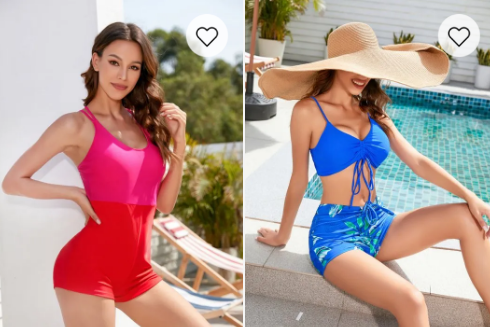The bikini, a symbol of freedom and self-expression, has evolved beyond its origins to become an empowering and inclusive garment. In this article, we delve into the world of bikinis, exploring how they have transcended societal norms, encouraged body positivity, and empowered individuals to embrace their unique beauty and confidence.
- A Brief History:
The bikini, first introduced in 1946 by French fashion designer Louis Réard, caused a sensation with its daring design and revealing nature. Initially met with skepticism and controversy, the bikini gradually gained acceptance as a symbol of liberation and body confidence. Over the decades, it has become a staple in swimwear fashion, evolving in style, colors, and patterns to cater to diverse tastes and preferences.
- Breaking Stereotypes:
One of the most significant impacts of the bikini is its ability to challenge societal stereotypes surrounding beauty and body image. Traditional beauty standards often dictate that only certain body types are deemed acceptable or "beach-ready." However, the rise of body positivity movements has shattered these narrow ideals, promoting self-acceptance and celebrating diverse bodies.
Bikinis play a crucial role in this movement by encouraging individuals of all shapes, sizes, and backgrounds to embrace their bodies without shame or judgment. From plus-size models gracing magazine covers to social media campaigns showcasing real people in bikinis, the message is clear: beauty knows no bounds, and every body is bikini-ready.

- Inclusive Swimwear Options:
The fashion industry has responded to the demand for inclusive swimwear options, recognizing the importance of providing choices that cater to a wide range of body types and personal styles. Swimwear brands are now designing bikinis with adjustable straps, high-waisted bottoms, supportive tops, and various cuts to suit different body proportions and offer comfortable coverage.
Moreover, the representation of diverse models in marketing campaigns has become more prevalent, emphasizing the idea that beauty comes in all shapes, colors, and sizes. These inclusive swimwear options and representation empower individuals to find the perfect bikini that makes them feel confident and comfortable, regardless of societal expectations.
- Empowering Self-Expression:
Bikinis have become more than just swimwear; they are a form of self-expression and personal style. With a myriad of designs, prints, and embellishments available, individuals can choose bikinis that align with their personality and reflect their unique fashion tastes. From vibrant colors and bold patterns to minimalist designs and retro aesthetics, the options are limitless.
Bikinis also provide a canvas for individuals to express their individuality through accessories such as cover-ups, hats, sunglasses, and jewelry. These additional elements allow people to curate their beach or poolside look, boosting their confidence and creating a sense of empowerment through style.
- Embracing Confidence:
Above all, the bikini culture promotes self-confidence and encourages individuals to embrace their bodies with pride. By challenging societal beauty standards and providing inclusive options, bikinis foster a sense of liberation and acceptance. They remind us that every body is beautiful and deserving of love and admiration, regardless of its shape or size.
Through the celebration of diverse bodies in bikinis, individuals are inspired to focus on their strengths, unique features, and the joy of being in the moment. Confidence radiates from within, and the bikini serves as a symbol of that self-assurance, reminding us that we are all worthy of feeling comfortable and confident in our own skin.
Conclusion:
The bikini has transformed from a controversial garment to a symbol of empowerment and body positivity. It challenges societal norms, encourages self-expression, and promotes confidence among individuals of all body types.